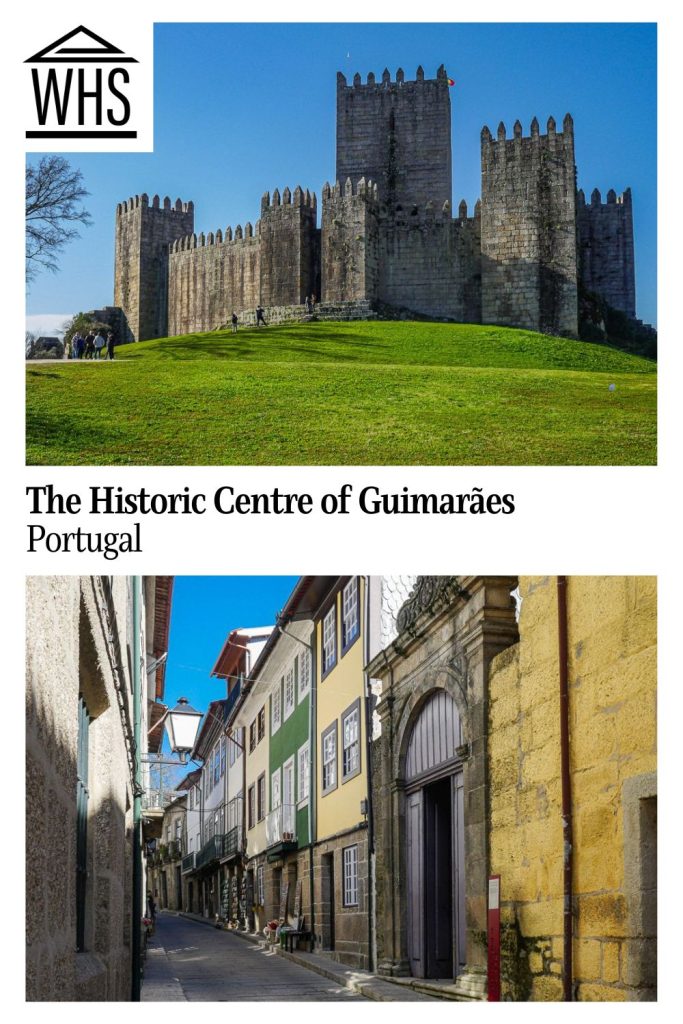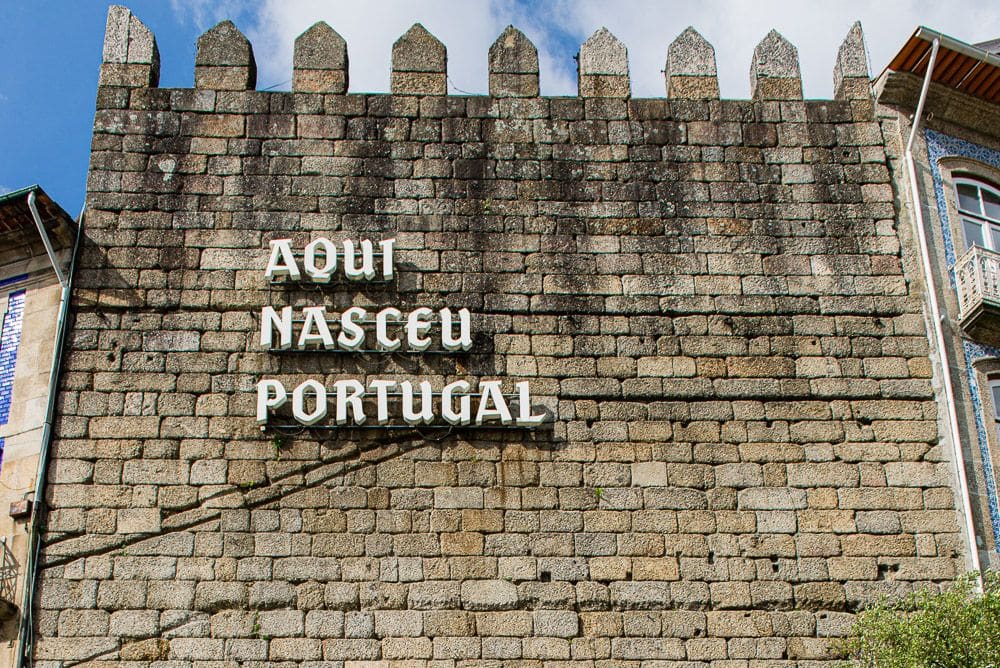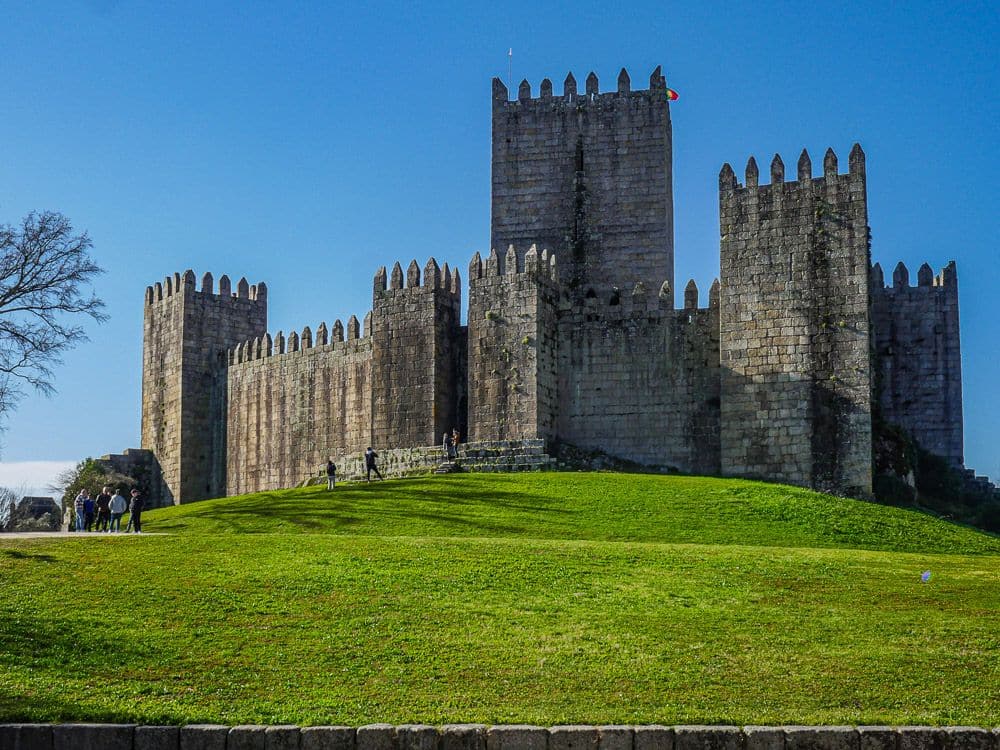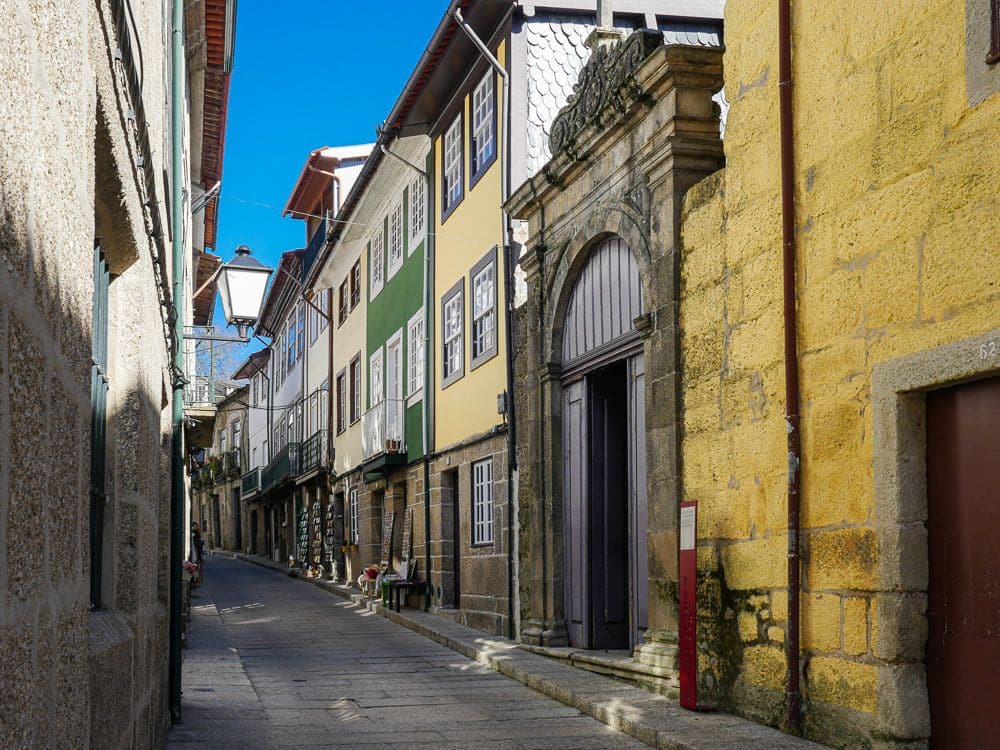The Historic Centre of Guimarães
New name in 2023: Historic Centre of Guimarães and Couros Zone
By Anita Breland
What is the Historic Centre of Guimarães ?
The Historic Centre of Guimarães is a UNESCO World Heritage Site in the city of Guimarães, in northern Portugal. The city’s cultural landscape is a testament to the history of the region, and in particular, the evolution of the medieval urban landscape in Europe. Founded in the 10th century, Guimarães is considered to be the birthplace of the Portuguese nation.
Disclosure: This article contains affiliate links. Making a purchase through an affiliate link will mean a small commission for this website. This will not affect your price.

According to legend, Afonso Henriques, the first king of Portugal, was born in Guimarães in 1109. He is credited with leading the fight to free Portugal from the rule of the Kingdom of Leon. His victory in the Battle of Sao Mamede in 1128 is widely seen as the moment that Portugal became independent. In 1139, Afonso Henriques became King of Portugal. The subsequent signing of the Treaty of Zamora officially established Portugal as an independent kingdom.
NOTE: In 2023 this UNESCO site was significantly extended outside the boundaries of the original walled city to include an industrial area called the Couros Zone that still contains vestiges of area’s history as leather-tanning center. At the same time, the name became Historic Centre of Guimarães and Couros Zone.
Why is Historic Centre of Guimarães a UNESCO World Heritage site?
According to UNESCO, “The Historic Centre of Guimarães is an outstanding example of the development of a political, administrative and religious centre in Europe in the Middle Ages.” In addition, the city’s “urban plan is still basically medieval, and its cultural identity is strongly rooted in the history of Portugal and its people.”

What can you expect on a visit to the Historic Centre of Guimarães?
The historic center, with its medieval streets, churches, and monuments, is exceptionally well preserved. Half-timber houses line picturesque cobblestone streets and contribute to a harmonious townscape. Developed in the Middle Ages, the architecture of these traditional buildings later became a characteristic feature of Portuguese colonies in Africa, South America, and Asia.
The compact historic center is mostly pedestrianized and easy to explore on foot. From the castle in the north to the monastic complex in the south, a stroll through the town traces the arc of a medieval settlement transitioning into a modern town, showcasing the development of Portuguese architecture from the 15th to the 19th centuries.

A number of historic sites are linked to the nation’s founding and early development. These include:
- The Castelo de Guimarães (Castle of Guimarães) was built in the 10th century on foundations dating back to Roman times. The castle’s purpose was to provide protection for the Igreja de Nossa Senhora da Oliveira church in the city below. The current structure, with its Gothic elements, was built mostly in the 13th century to house the royal family, but fell into ruin a century later. Restoration began in the 1930s. The castle, its tower, and the nearby chapel of São Miguel do Castelo are all open to visitors.
- The Paço dos Duques de Bragança (Palace of the Dukes of Branganza) dates from the 15th century. Part of the palace is now a museum, housing paintings, applied art and weaponry. The palace also serves as the official residence of the President of the Republic on visits to the north of Portugal.
- An ancient stone arcade beneath medieval council chambers links the atmospheric Praça de São Tiago (Square of Saint James) to neighboring Largo da Oliveira square. The double square is ringed by popular cafes and restaurants.
- Just beside Praça de São Tiago, the monastic buildings of the Colegiada de Nossa Senhora da Oliveira contain the Museu de Alberto Sampaio (Alberto Sampaio Museum). The beautifully-restored monastic building displays religious treasures in the former cloister and surrounding rooms. Must-see items include remarkable frescoes from churches in northern Portugal; the Triptych of the Nativity, a medieval masterpiece in silver; and the tunic worn by Dom João I (King John I) at the Battle of Aljubarrota in 1385.
Is the Historic Centre of Guimarães worth visiting?
Guimarães is absolutely worth a visit! Designated European Capital of Culture in 2012, Guimarães is a popular destination for travelers interested in Portuguese history and culture. The city’s charming ambiance, as well as an abundance of cafes and restaurants, make it an appealing excursion from Porto, whose center is also a UNESCO site.

Tips for visiting Guimarães
You can visit Guimarães on a day trip, and several tour operators include Guimarães as part of a full-day tour that includes both the Historic Center of Guimarães and the Sanctuary of Bom Jesus do Monte – also a UNESCO site – in Braga.
Book a group or private full-day tour to Guimarães and Braga.
However, Guimarães is well worth a longer stay, to fully appreciate its charms. The city has a number of hotel options in all price ranges, several of them in the Historic Center. For an extra dose of historic authenticity, I recommend an overnight or two at Pousada Mosteiro Guimarães, a beautifully-restored medieval Augustinian monastery overlooking the city. The hotel is just five minutes by car or 20 minutes on foot from the historic center.
Restaurants in Guimaraes run the gamut, from cafes to fine dining establishments, and there are many excellent ones to choose from. Traditional dishes tend toward the hearty fare of northern Portugal, but there are lighter options, too, from Asian fusion to vegetarian. While strolling in historic Guimaraes, be sure to look for the city’s signature pastry, Tortas de Guimaraes. This crescent-shaped pastry—filled with egg yolks, sugar, almond flour, and squash—was originally prepared by nuns from the Convent of Santa Clara and can be sampled all over town.
Other UNESCO sites that aren’t too far away are Historic Centre of Oporto and Alto Douro Wine Region.
Where is Guimarães?
Guimarães is about 40 minutes’ drive by car or bus from Porto. Hourly train service from Porto’s Campanhã station delivers travelers to the Guimarães station in just over one hour.
VisitPortugal has more information for planning a visit to Guimarães.
Have you been to Guimarães? If so, do you have any additional information or advice about this UNESCO World Heritage site? Please add your comments below!

